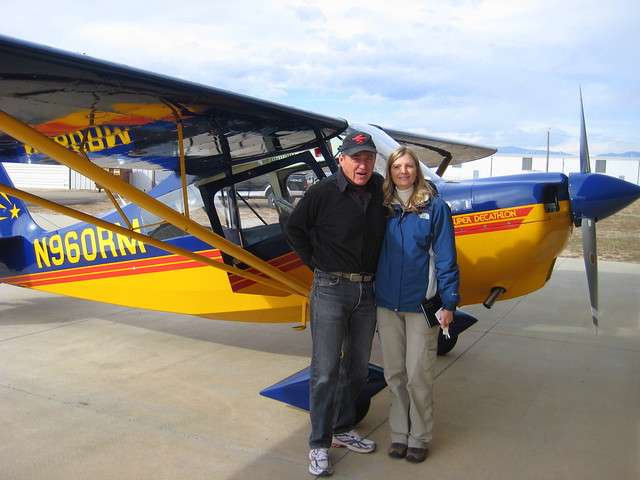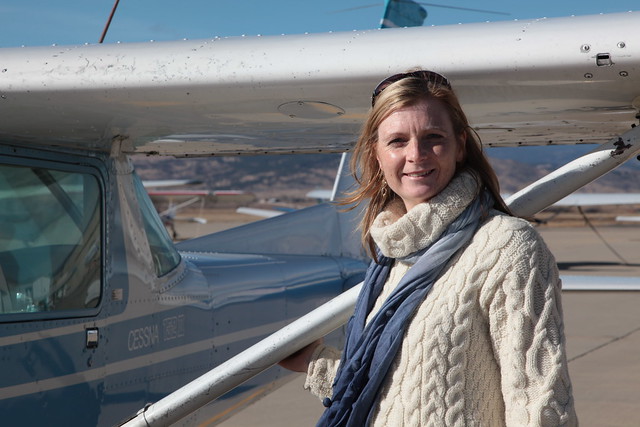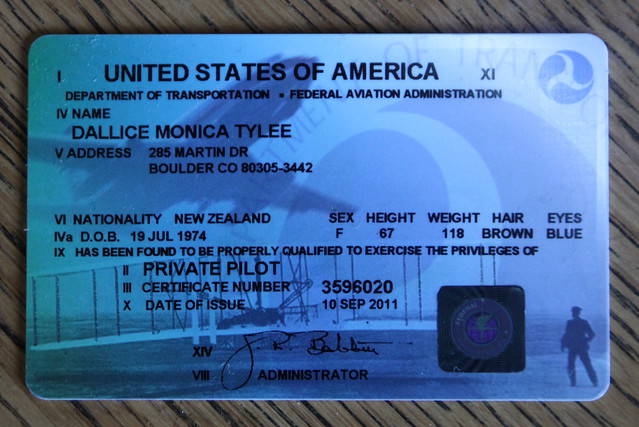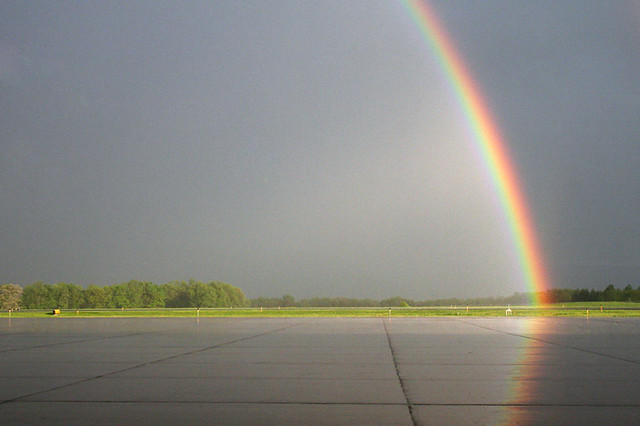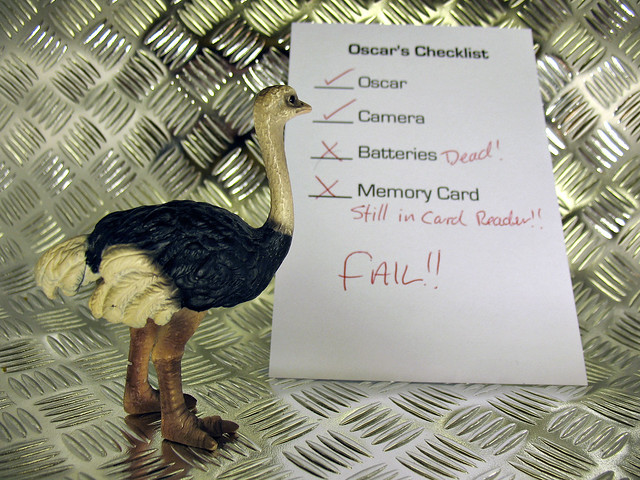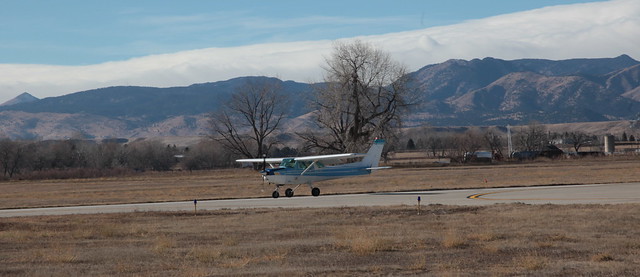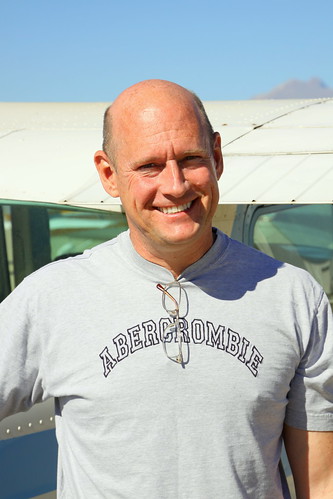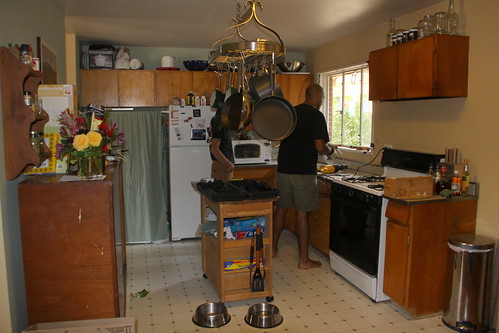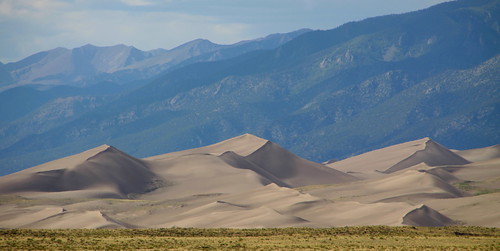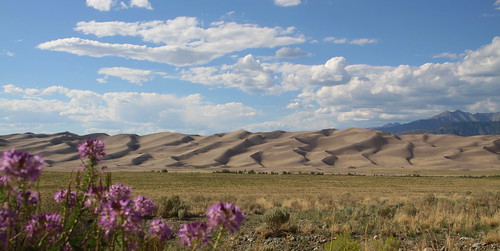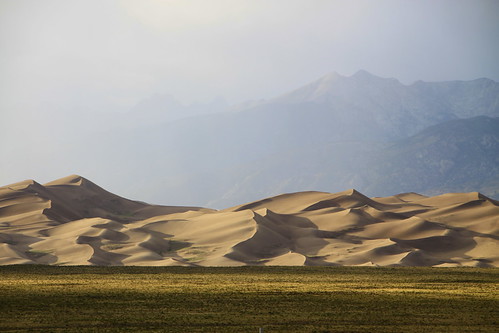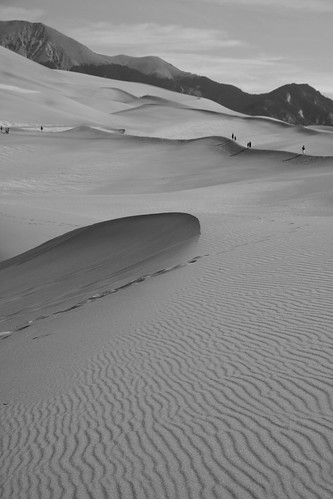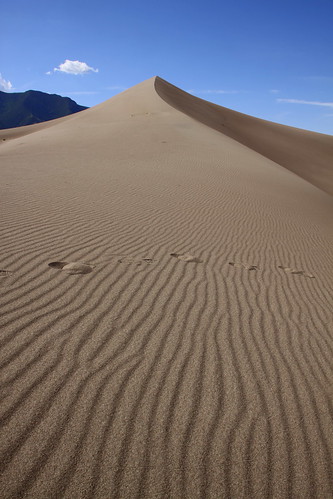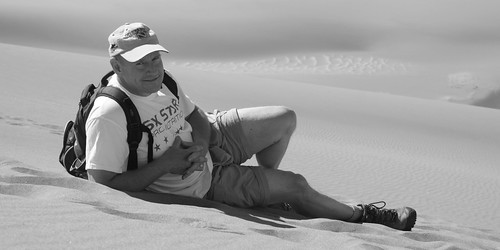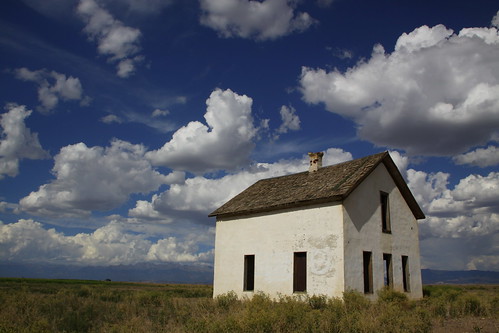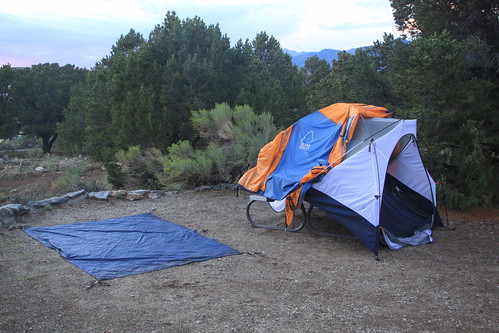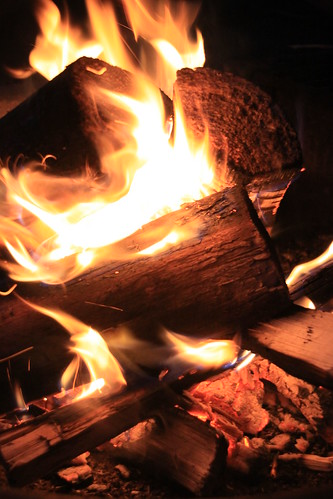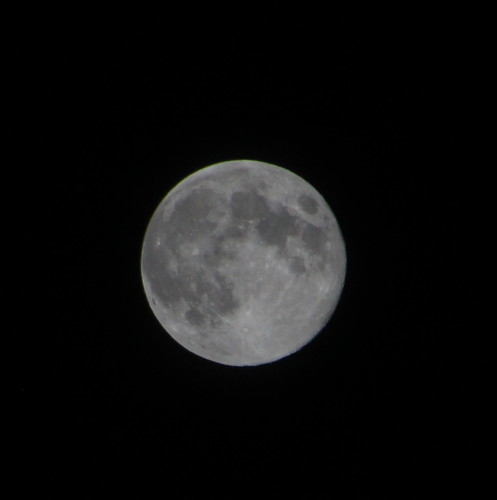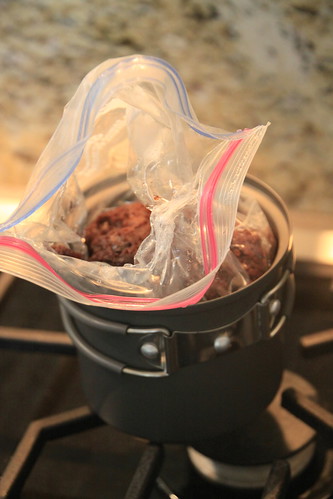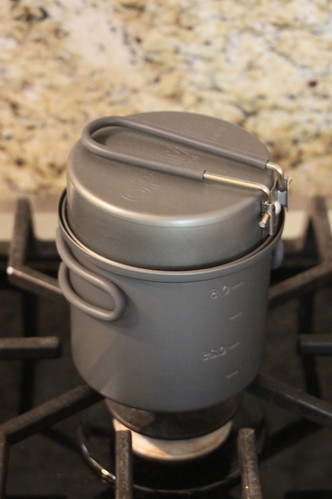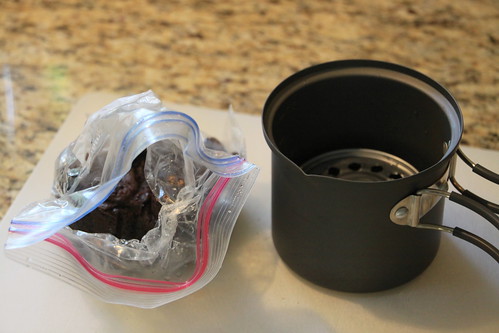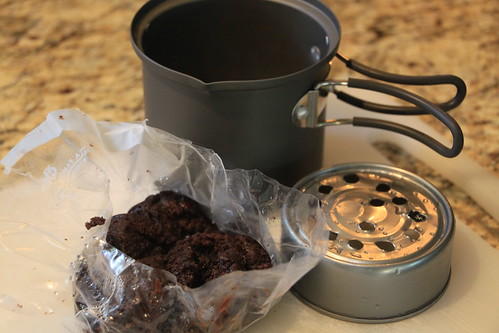It was "practical examination day". Sunny, warm, calm.
FAA examiner, Bev Cameron, watched me do a thorough pre-flight inspection. Nothing escaped her and at various points she asked me what I was looking for and why. What would I do if I found this or that? What would it mean for flying that day?
We jumped in and got situated. Well, I jumped in and Bev, a tad older and shorter than me and with her boat cushion/booster seat in hand, kind of climbed in. End result... the two of us, snuggly fitted into Cessna 65440 and ready for action!
All pilots know that checklists are important. Pre-flight inspection lists, pre-start up list, pre-take off lists. They were never more important than that day. Failure to reference a checklist was just that... failure! And Bev was watching everything I did.
I started the engine, checked weather once again, radio'd my intentions and set off to the end of runway 29, in calm winds. Of course just about the time run-up was complete, 3 or more other aircraft announced their intentions too. A take-off at runway 11 and two landings... at 11. Drat! Best to taxi back to 11 and go with the flow.
First things first... a short field take-off with a 50' obstacle. Not a problem. Could have put flaps up a bit earlier, but definitely cleared the imaginary obstacle, tracked the runway, and was safe. Bev reminded me that a good way to double check the obstacle was cleared, was to quickly look at the altimeter. Good to remember.... and served as another reminder why I liked Bev. She added value.
I turned to my first heading, did a clearing turn and began flying the first leg of the cross country I had planned. It was a bit of a challenge, having another person in the cockpit. After all, she took up the seat that had traditionally been "my desk".
I was on track, the times were working out nicely and ground speed too. I passed over each visual checkpoint as planned and was able to point out the landmarks and identify them on the chart. Just one thing not going quite right... I was having trouble getting my VOR right. Was it me or the VOR having problems? The more I thought about it the more it bothered me. Later Bev and I talked about this distraction and how she had wished I had just turned it off instead of going back to it again and again. The truth was that I
didn't need it to navigate right then and should have turned it off. My other navigation was serving us just fine and we were on track. By the way, Bev asked me what the "other navigation" was called. Yes, pilotage.
Shortly after this cross country bit, Bev asked me to turn us to the west and prepare myself for the foggles (view limiting device) portion. "You've got the plane", "I've got the plane", "You've got the plane" was exchanged as she took control while I stowed and un-stowed equipment, then put on the foggles. We did climbs, descents, standard rate turns and recovery from unusual attitudes - which has always been a favorite. My belly was twisted in knots of anxiety and I know I didn't do as well as the other times I have practiced this. When the foggles came off, I was able to identify where we were pretty quickly, as asked. Several small bodies of water and a main road tipped me off that I was between Longmont and Boulder. We had flown quite a bit further than I thought we had, but I'm guessing it was no accident we were still within the bounds of the chart I had open!
Over a low population density area, Bev asked me to get the airplane ready for slow flight. This portion went fairly quickly... slow with turns, climbs etc. Then I got to chose which stalls we did first. Power-off please! (I like to work up to the power-on stalls.) After a couple of nice full power-off stalls it was time for the power-on ones. For me the hardest part is keeping the airplane straight when pointed at a clear blue sky, with no cloud references. I think I could have slowed 65440 down a tad more before going to full power and pitching up, but it seemed I kept on heading ok and my recovery wasn't too bad either. Bev then asked for a power on stall in a turn. I was honest and told her I had never done these. I was able to answer questions about stall-spins and recite the checklist for a spin recovery - as memorized from the POH. Bev asked if she could demonstrate the power-on stall in a turn, and I gave her control of the aircraft.
I was actually having fun now! Bev showed me the stall, then I followed her instruction and repeated the maneuver. I remember at one point, the stall warning going off loudly, the nose pitched up and to the right and Bev asking me "What causes a stall spin?". I immediately looked at the turn coordinator... "Being uncoordinated" I said, as I jammed a foot harder onto the rudder peddle to correct myself! She smiled. I recovered from the imminent stall and cleared my mind, ready for the next instruction.
Just as I prepared for more flying maneuvers, I "lost the engine". Simulated engine roughness or failure was only a matter of time in a check-ride. I had practiced this more than once with Mark and Dick and luckily, Colorado is full of fields, just waiting for an emergency landing. I knew to verbally run through the list of possible causes and how to attempt to restart the plane, but before I could get most of it out, Bev looked at me and said, "Its not any of the common things you are going to check for, and you can't restart the plane". Ok... so we are going in for an emergency landing then!
I pitched for optimum glide speed and picked the field. After a quick descent, carb heat on and flaps down, I was on final approach. About 500' above the field, I was told that I could go around. (Phew! I wouldn't be spending my Sunday picking corn husks off this Cessna 152 after all!) I had full power back and slowly retracted flaps, as I climbed. We talked about what made a good emergency landing field, why I chose the direction of landing and what to be careful for. Obstacles, irrigation ditches and deep plowing ruts were obviously not ideal, landing into the wind was.
Steep turns ensued. No drama, no problem. I can say from experience that some days steep turns are a cinch and other days I'm struggling to understand why I cant maintain altitude and angle of bank very well at all. This day was a good one. We then began S-turns. I think I got about a half turn completed when Bev said we were done with those too. And there was no "turns around a point" during my check-ride.
Now half way between Longmont Airport (Vance Brand) and Fort Collin-Loveland Airport, I was asked if I would prefer to do some landings at either one. Since I was tuned to Fort Collins and could hear plenty of traffic, I took a chance and opted for Longmont... my home turf. It paid off. There were maybe two other aircraft in the landing pattern.
I almost forgot to mention; On the way back to Longmont, I encountered simulated engine roughness! This time I knew what Bev had spotted. The woman thinks on her feet! There is a private airstrip near Berthoud and she had seen it out her window. She had me quickly determine whether or not I should land, where I might land and why. We talked about the legality of landing on private strips and whether or not my engine roughness was a real emergency. I concluded, after running through the possible causes, it was not (yet) and would make haste to Longmont airport and land as soon as practicable. Also on the way back we did some VOR work. I was able to find which radials I was one, for 2 different VOR's and estimate where I was on the chart. She asked me questions about my bearing and which radial I was on. She had me demonstrate finding my radial, then turning to the heading that would take me to that VOR.
Once on downwind at Longmont, Bev asked me to pick the place on the runway I would touch down on, then asked for a short field landing, no obstacle. In talking later, she informed me I was a bit short of my chosen touchdown point...Oops! We taxi'd back and did a soft field take off, then a soft field landing, before taxiing back to the ramp to park and tie down.
It's a little weird to ask your examiner to help you park, but Im a light-weight and pushing down on the tail to turn the plane, in order to get it into its tie-down spot, is pretty much impossible for me! Like the rest of my experience with Bev, I found she was very willing to help and again, I was better off for it.
Im sure Im missing stuff, but this how it went for the most part. It took about 1.25 hours in all.
We discussed most of her notes before exiting the airplane. Then it was just a matter of getting back into IACRA and her printing me off a temporary private pilot license to finish up. (Easier said than done... that site is not exactly intuitive!)
I would like to say I was overcome with emotion... that a great sense of relief flooded over me and I couldn't stop smiling. But the truth was, that came
hours later! It takes a while to discharge deep seeded anxiety, to fully comprehend that there is now time and brain space for something other than check-ride preparations.
For me, it just felt good to be leaving the airport a bit lighter. To be able to enjoy food again, to sleep long and deep and enjoy quality time with the people that have long supported me.
A sense of tremendous accomplishment didn't really hit me until the morning I opened my little white envelope from the FAA and found this:


